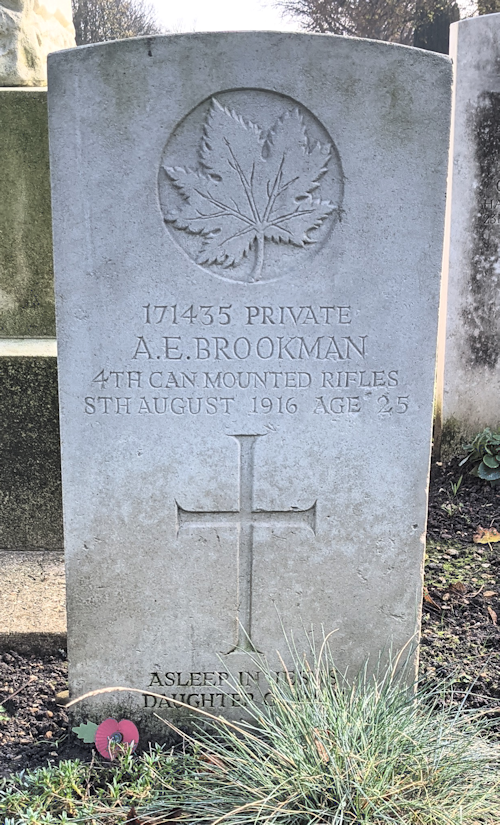
172195 Pte. George Stanley Harrison
Northampton (Kingsthorpe) Cemetery
Northampton
England
George was born on 5th January 1889, in Northampton, England, to George Stanley and Ruth (née Crookes) Harrison.
Having emigrated to Canada, certainly by 1912, George married Mabel Mary Summers, also from Northampton, in Toronto, Ontario, on 6th July 1912.
When the call came for George to sign up, he was working as a tinsmith and was living with Mabel in Toronto, where he attested on 21st August 1915. Being assigned to the 83rd (Queen's Own Rifles) Battalion, which was raised to provide reinforcements to the Canadian Expeditionary Force. After initial training the 83rd BN was sent to England, making the crossing on the SS Olympic (sister ship to the ill-fated Titanic-, landing George back on the old home soil on 7th May 1916.
Being a reinforcements battalion, 241 men of the 83rd were transferred on 7th June 1916 to the 4th CMR, who had suffered huge losses on the opening day of the 13 day 'Battle for Mount Sorrel', of 2nd June 1916. It was during the 4th CMR's time at the front, at Mouquet Farm, Pozièrs, in France, that they were being subjected to the usual and random attritional shell fire, that George received a head wound from a piece of shrapnel. Variously treated by the 4th, 7th and 8th Canadian Field Ambulances, and was returned to duty on 10th October.
However, George was back in medical care with appendicitis on 19th December, initially being handled by the 8th Stationary Hospital in Wimereux, coastal France north of Boulogne, the treatment for which saw him transferred back to England for time over Christmas, and thence on to the 1st Birmingham War Hospital on 27th December. Having been operated on and recovered from that he was treated at Bearwood for 13 weeks for a heart murmur before being attached to the Canadian Casualty Assembly Centre in Hastings, on England's south coast, until he was then assigned to the 2nd C.O.R.D. (Central Ontario Reinforcement Depot). In June 1917 he was assigned to the Canadian Army Service Corps (CA.S.C.), which he remained with through to the end of the war.
In January 1918, George was granted permission to wear one good conduct badge, which was an inverted, cloth, Lance Corporal's chevron, worn low on the left sleeve. These were usually awarded for the soldier not being on any formal charge or having undergone any form of discipline after each year of service.
During the immediate post-war months, still based in England, George became ill around 4th February 1919 and admitted to hospital in Bramshott, Hampshire, on 11th February in a very poor condition, with coughing and chills. In the early afternoon of 13th February, George was complaining about a great deal of pain in his right side. At 7:30pm his pulse was reported to have been imperceptible and at 7:45pm he passed away with a diagnosis of influenza.
172196, Pte. George Stanley Harrison now lies at rest in Northampton (Kingsthope) Cemetery, Northampton, England.
The biography is courtesy of researcher David Kavanagh and the headstone image is supplied 4cmr.com